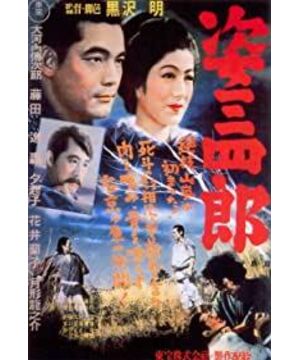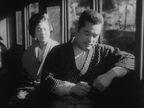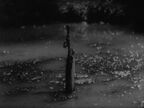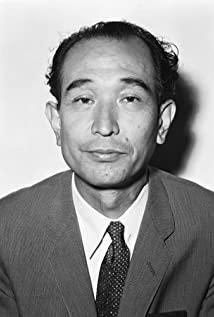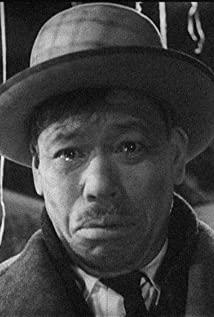Before watching these two films, I didn't know the difference between "jiu-jitsu" and "judo" in Japanese martial arts. The former is just a fighting skill, while the latter pays more attention to the cultivation of spiritual temperament. From the opening scene, it can be seen that Judo is superior, Yano's momentum of going to the meeting with a single sword is very enjoyable to watch. That clog is impressive. I think Yano takes off the clogs and stands firm on the bottom plate is the key to victory. The jiu-jitsu samurai does not know the trick to work around it. "Take off" and "put down" both contain certain of Zen. Learn to practice martial arts first, learn to be a man, this is what Yano taught Zisanshiro, because Zisanshiro fights and makes trouble after he has achieved a little. This kind of cultivation method from the inside out also reflects the martial arts principle of "intent to force first". Jin Yong also pointed out that the focus of martial arts should be "Xia", not the "Wu" that most martial arts fans talk about. Zi Sanshilang saw the blooming of the lotus flower and had an epiphany, which was too far-fetched and abrupt. After all, he was just a young man, how could he so easily understand the Zen philosophy of the unity of man and nature. I think it would have been better if there were some sophisticated setbacks in the plot.
According to the online introduction, the response of the sequel was far inferior to the first one, but I think the sequel has made great progress compared with the first one. In the first part, Zisanshiro's martial arts experience was only briefly described, but the emotional entanglement between him and Xiaoye was mainly described, and the rest did not reveal anything about human nature, thought, and society. The sequel has undoubtedly added a lot of content - Xiaoye's remorse after the death of his father, the confusion he faced with the people after he became famous, the invasion of American boxing culture, and the depression of being unable to deal with the provocation of karate. Struggling with a wider range of deeper thoughts. I think the scene of teaching an American boxer was an insinuation of the current situation of Japanese society in 1945. What Kurosawa was trying to tell the world was that although Japan was defeated, it was only a victory or defeat by external force. The inner national spirit of the Japanese people will not be overwhelmed. Moreover, as a form of sports entertainment, boxing is a product of the commercial society, the purpose is only to please the audience and obtain material benefits, which is contrary to the original intention of Bushido. However, seeing that the old jiu-jitsu masters had to take the stage and be humiliated by American boxers because of the decline of jiu-jitsu, this made Zisanshiro feel the great national responsibility of carrying forward the spirit of judo. In the end, he used benevolence and righteousness to influence the Higaki brothers. This was a kind of spiritual victory, which was incomparable to the victory by force alone in the first part.
Of course, in terms of plot arrangement, martial arts design, and ideological themes, these two films are still very weak and lack viewing pleasure. If they are shown in the current cinema, few people will care about them. The sluggish movements, clumsy moves, and empty howls in the final duel were all boring, but fortunately not lengthy. However, as a masterpiece, there are still many places for future generations to learn from. Isn't "Seven Samurai" developed from this?
View more about Sanshiro Sugata reviews


